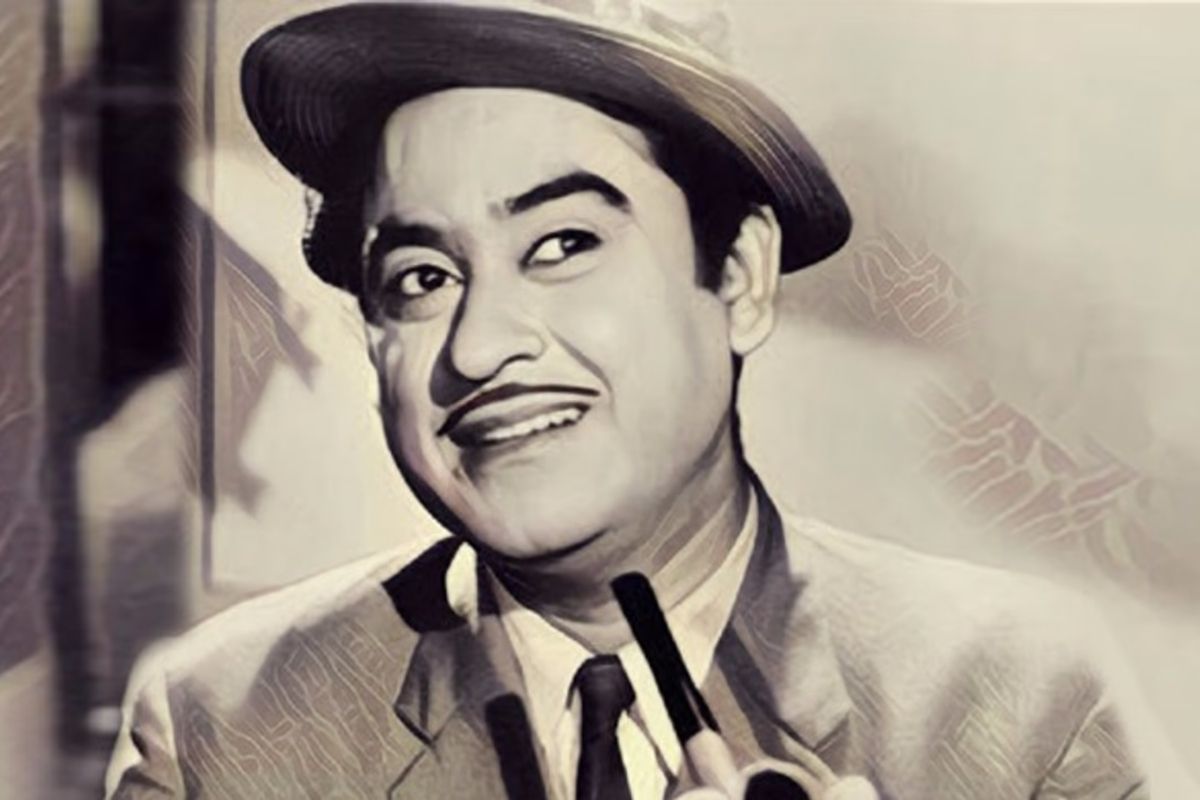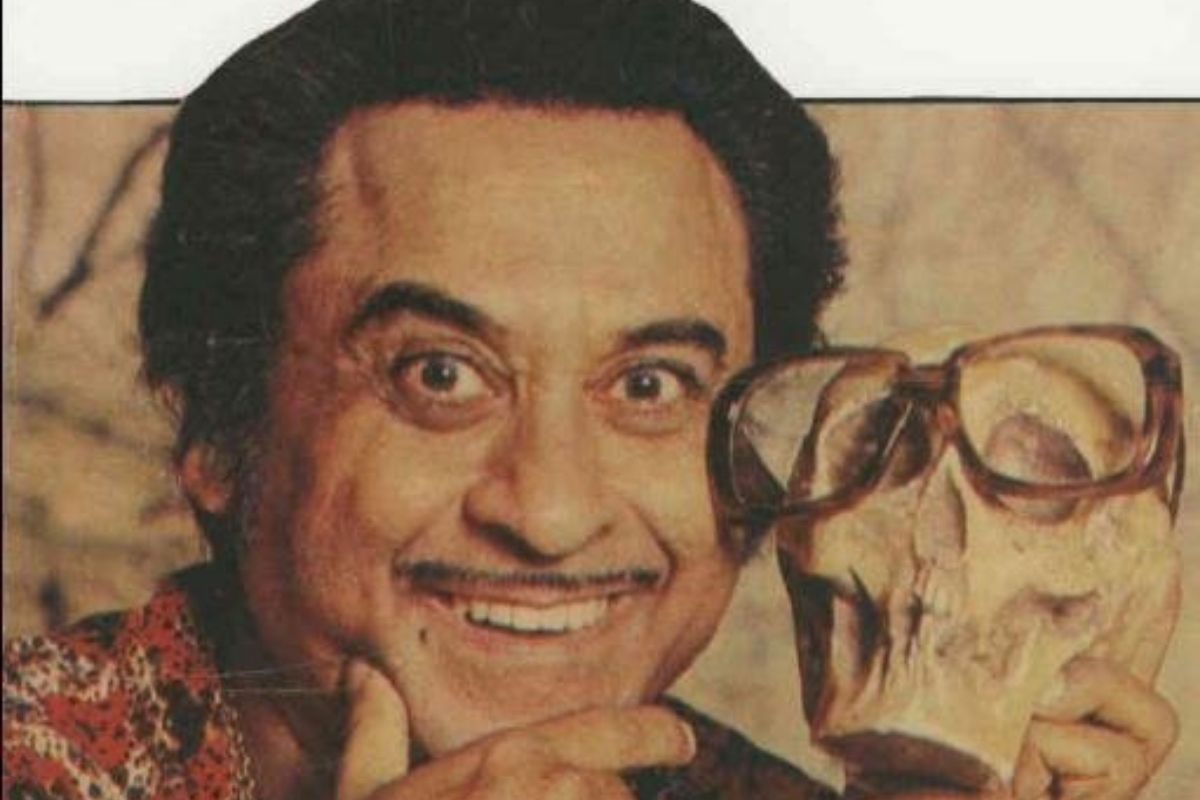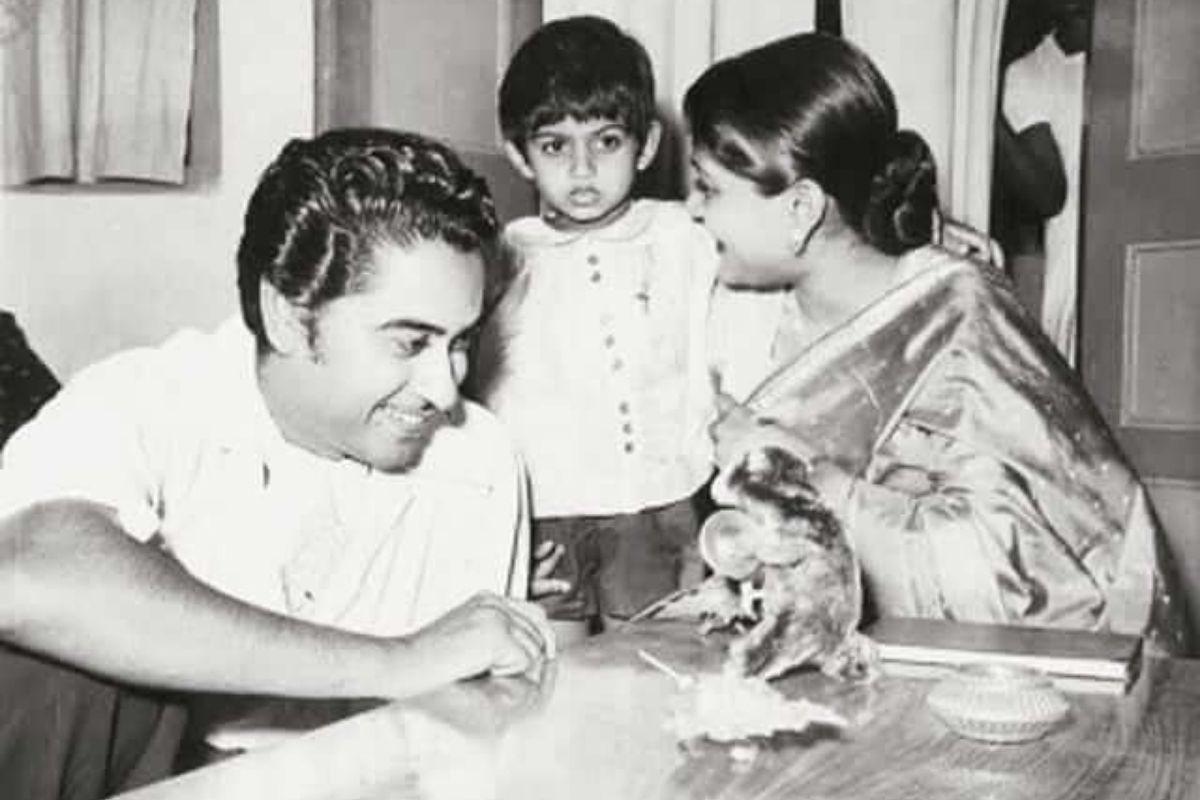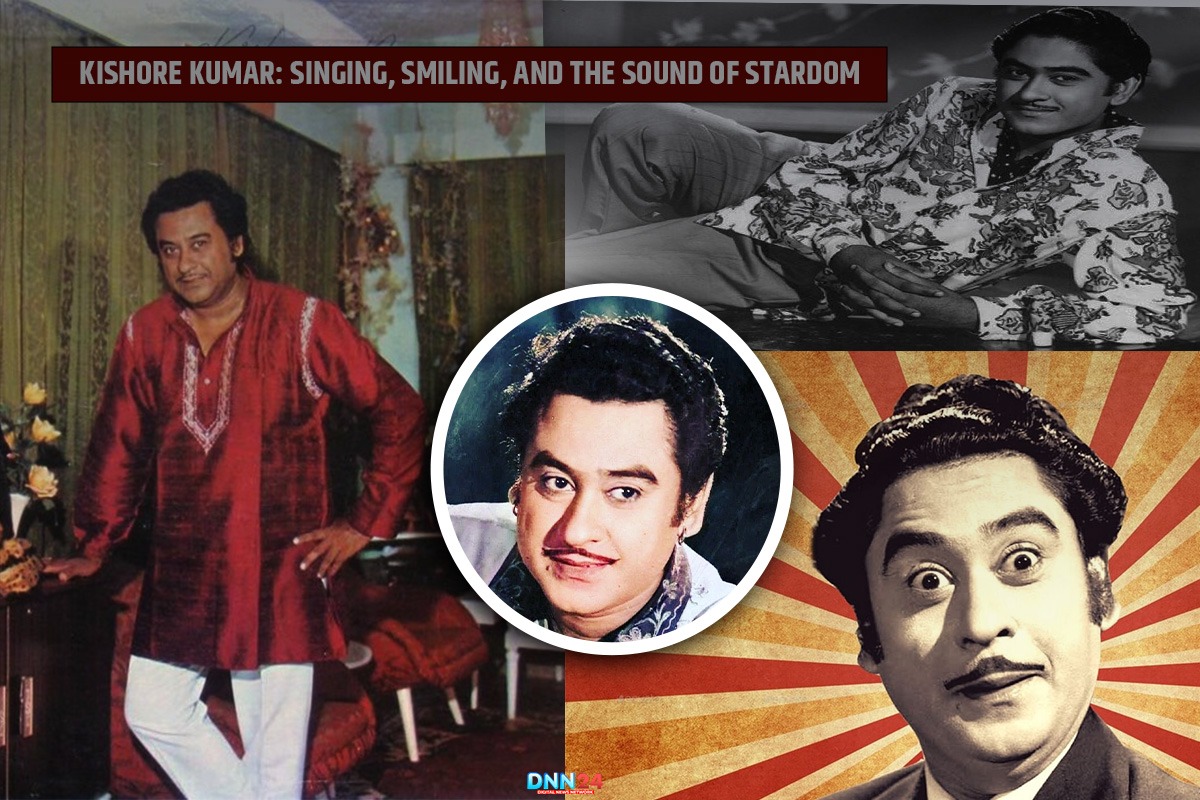Kishore Kumar was born Abhas Kumar Ganguly on 4 August 1929 in Khandwa, Madhya Pradesh. There was no precondition for him in music or films, but his elder brother Ashok Kumar was already a well-renowned actor in Bollywood. Young Kishore Kumar was a playful child who was fascinated with mimicking the voices and allowing people to laugh heartily. He failed many times in school and often said, “I hated studying—my only love was acting and singing!”
Originally, Kishore started singing in groups and acting in cameo roles when Ashok Kumar took him to Mumbai. His first chance came with the film “Ziddi” (1948), where he sang “Marne Ki Duayen Kyon Mangu” for Dev Anand. However, the achievement was not easily attained. Film-makers called him “too loud” or “not classy enough” for hero roles. Kishore did not give up. He joked, “If they don’t take me as a hero, I’ll become the voice of heroes!”
The initial years that Kishore spent working for him were rather tough. Before his discovery, he worked as an extra in many films, and people did not know he had a singing talent. Nevertheless, he was always smiling and continued his attempts. Kishore felt that someday, his voice would become familiar to everyone in India. He also does exercise each day to improve his voice. His mother, father, siblings and other relatives started to become concerned about his future, academics and career, but he was sure singing was his destiny.
From Struggles to Stardom: Kishore’s Bollywood Journey
Kishore’s fate, for some reason, took a turn for the worse in the 1950s and 60s. He acted in comedy roles, directed films like “Door Gagan Ki Chhaon Mein” (1964), and even wrote stories. But he only turned professional after the 1960s. Music director S.D. Burman gave him big chances in “Aradhana” (1969) and “Kati Patang” (1970). Songs like “Roop Tera Mastana” and “Yeh Jo Mohabbat Hai” made him the king of playback singing.

Kishore’s voice matched Rajesh Khanna’s style perfectly. Together, they gave hits like “Mere Sapno Ki Rani” and “Zindagi Ek Safar Hai Suhana.” From this man’s voice, one could dance or scream—in essence, Kishore was an actor who acted through another medium. Directors loved how he could change from romantic songs like “Pal Pal Dil Ke Paas” to playful songs like “Badi Sooni Sooni Hai.”
During this period, Kishore’s schedule was filled enormously. Stars queued for him to be able to convince him to compose music and provide vocal performances for their movies. At some point, he could produce five or six songs in a single day. It can be said that Troy Brown always performed at his best, even during his weak moments. It is said that this was the golden era of Hindi film music and Kishore was its superstar. His fees also increased, but the people who produced films paid without complaint because his voice gave a touch of magic to their products.
The Golden Era: Kishore’s Singing Style and Hits
Kishore Kumar’s voice was natural, energetic, and very emotional. Unlike other singers, he attended no music school and was not polished conventionally. Instead, he employed his singing by which he yodelled, whispered, and, if need be, cried on the songs. For “Chingari Koi Bhadke” from “Amar Prem” (1972), he cried real tears while recording!

He worked closely with R.D. Burman, creating wonderful music in films like “Sholay” (“Yeh Dosti”) and “Khubsoorat” (“Humein Aur Jeene Ki”). Kishore also sang for Amitabh Bachchan in “Don” (“Khaike Paan Banaras Wala”) and “Mr. Natwarlal” (“Mere Pas Aao”). His potential for adjusting his voice based on particular actors made him popular in Bollywood.
There was a peculiarity with Kishore – he was versatile enough to sing any song. He could ‘sing you a happy tune, sing you a sad tune, sing you a love song or a comedy song with equal ease. Proclaimed to the music directors that Kishore could get the song’s soul by just reading the lyrics. He never needed much explanation. This made him unique for all the other singers. Thus, even when the songs had tough tunes, Kishore could make them look apropos and straightforward.
Behind the Laughter: Kishore’s Quirky Personal Life
Kishore Kumar was as famous for his jokes as for his songs. He got married four times, but Bollywood’s legendary actress Madhubala was his last wife. Before her marriage, he was married to another actress, Leena Chandavarkar. Friends called him a “mad genius”—he would record songs in the bathroom for better sound or refuse awards, saying, “My fans’ love is my trophy.”
He hated formal events. It is a known fact that once, he presented a banana peel instead of a speech during a film function! Nonetheless, Kishore was not a lavish man and lived humbly. He would say, “Money can’t buy peace. I find mine in music.” His sudden death on 13 October 1987 left millions of people very sad.

Kishore had always been eccentric in his behaviour. He sowed them as seeds and conversed with them. Sometimes, he could go for prolonged periods without uttering a single word to anyone. Suddenly, he would open up, speak, and make everyone around him crack up. His colleagues revealed they did not know whether to expect the reserved Kishore or the humorous man. However, everyone agreed that he was a gentleman who gave some money to many needy musicians and singers without such people knowing.
Kishore Kumar’s Everlasting Legacy
Even today, Kishore’s songs are played at parties, on radios, and in people’s playlists. Many newcomers, such as Arijit Singh, have revealed him as a hero they look up to. Awards like the “Kishore Kumar Award” honour his work in Indian cinema. His yodelling in “O Saathi Re” or the romantic “Kuchh Toh Log Kahenge” remains timeless.
Kishore once said, “I don’t sing for awards. My songs are about making the milk seller dreaming of going home to rest at night smile or a student who feels alone to feel loved. This association with the ordinary person keeps him alive in India’s heart. From street vendors to company bosses, everyone hums a Kishore Kumar song—proof that true legends never die.

They are used in new films, as indicated by the fact that some were even used in remix form. Even those youngsters who were not born when Kishore’s death today hum and dance to his songs. His singing style is described in film schools and books written about it. It continues to strike a chord with the listeners as radio stations play his songs consecutively on his birth and death dates the whole day. This shows that Kishore Kumar is not just a singer from the past—he is still a living part of Indian music and culture.
Also Read: Bollywood Portrayal of Historical Events
You can connect with DNN24 on Facebook, Twitter, and Instagram and subscribe to our YouTube channel.

